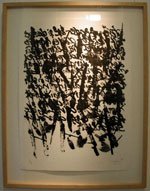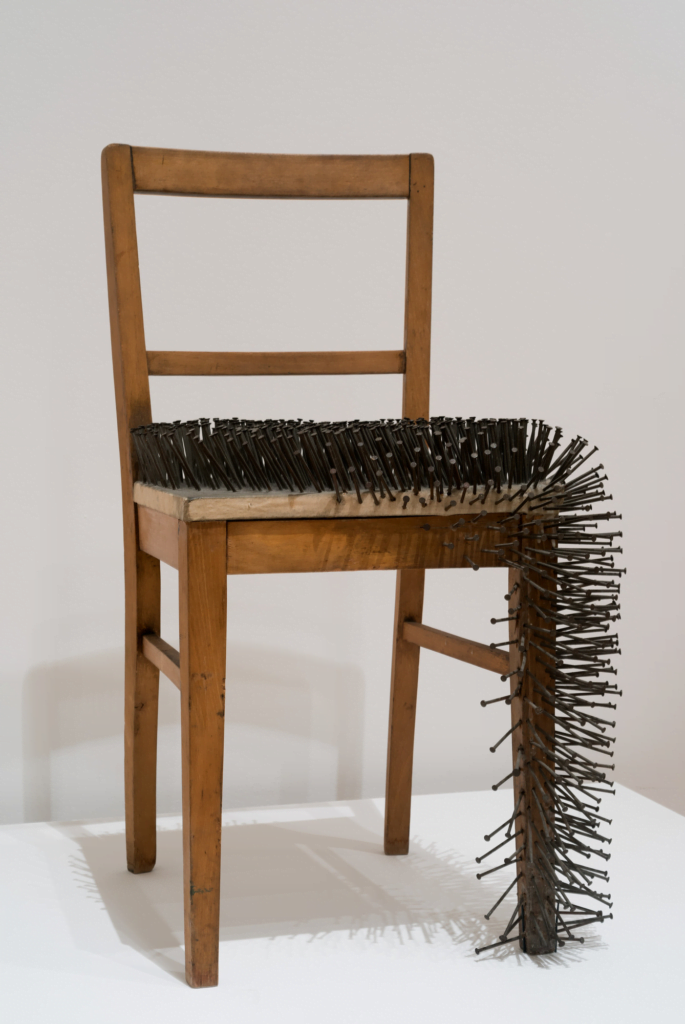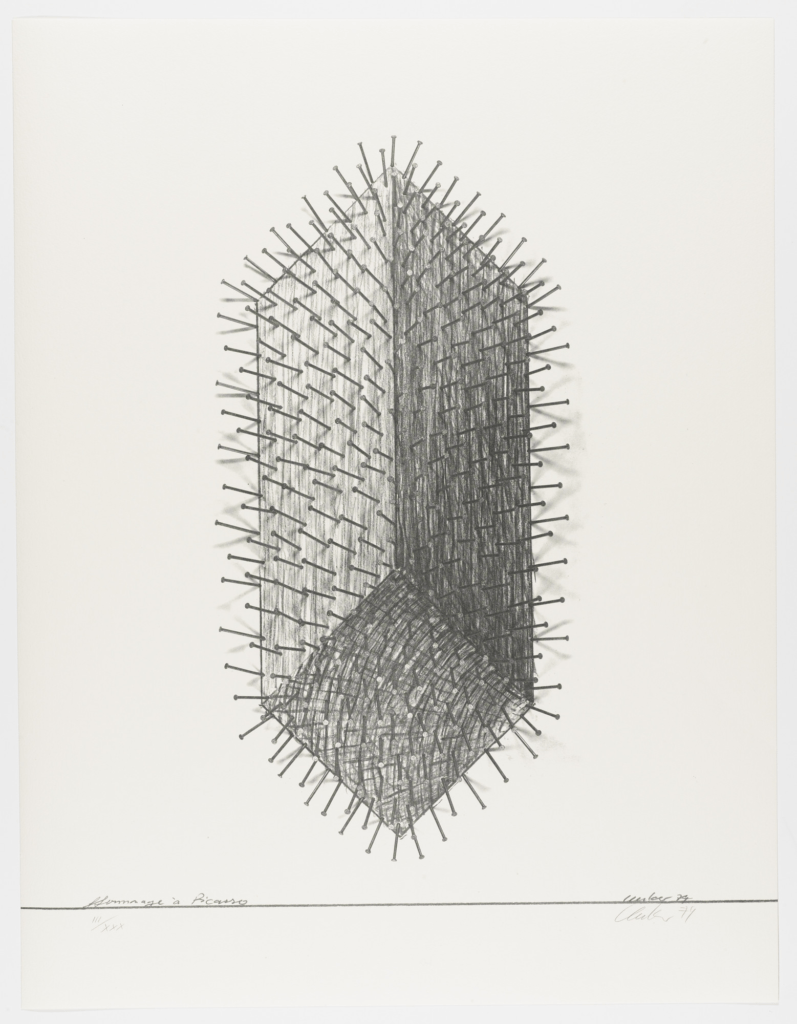Memoriesforart » Artists » Günther Uecker

More Facts
Name: Günther
Surname: Uecker
Lives & Works: Wendorf
Lives in State: Mecklenburg-Vorpommern
Nationality: Germany
Date of Birth: 1930
Period: Post-War
Movement: Modern art
Table of Contents
As an artist, you have likely faced rejection and obstacles in pursuing your creative vision. The life of German sculptor Günther Uecker serves as an inspiration, demonstrating how perseverance and an unwillingness to accept limitations can lead to a pioneering artistic career.
Though his chosen medium of nails is unconventional, Uecker has shown how even the most mundane of objects can be transformed into something meaningful and thought-provoking. His nail paintings and nail objects have established him as a leader of the Zero Group movement that redefined art in postwar Germany. By merging painting, sculpture, and performance, Uecker’s nail art explores light, space, and sensory experience in groundbreaking ways.
At 90 years old, Günther Uecker continues to challenge artistic conventions and push creative boundaries in new directions. His relentless experimentation with texture, form, and space reminds you that there are always new frontiers to explore if you remain open to life’s possibilities. Uecker’s vision, passion, and determination prove that creativity knows no bounds for those willing to forge their path.

Born 1930 in Wendorf, Germany, Günther Uecker developed an interest in art at a young age. His father, an art teacher, and experiences living under Nazi control during World War II shaped Uecker’s worldview and artistic style.
After the war, Uecker studied painting in Munich and Berlin, where he was exposed to abstract expressionism and informal art styles that emphasized free expression and rejected traditional techniques. Uecker began experimenting with found objects and industrially produced materials, incorporating sand, stones, and cloth into his paintings.

Günther Uecker is a famous German sculpture known for his nail paintings. Uecker combined his interest in kinetic art, painting, and sculpture in his nail paintings. The protruding nails created shadows and contours that changed depending on the lighting and viewing angle, giving the static works a sense of movement.

How Uecker Developed His Signature Style?
In the late 1950s, Uecker started using nails in his art. He hammered nails into wooden boards, canvases, and other materials, creating textured, three-dimensional surfaces. Uecker’s nail paintings pushed the boundaries of traditional painting and sculpture. The nails evoked feelings of pain and destruction but also regeneration and renewal.
Uecker’s early nail pieces were included in groundbreaking exhibitions like Monochrome Malerei in 1960. His work gained international recognition, reflecting the postwar European zeitgeist. Uecker became associated with the ZERO group, avant-garde artists who embraced light, motion, and new materials. ZERO aimed to renew art after World War II, emphasizing optimism and progress.
With his signature use of nails, Uecker forged a new path, combining painting and sculpture in radical ways. His early life in Germany and exposure to new art forms cultivated an innovative, boundary-pushing spirit that defined his prolific career. Uecker’s nail paintings conveyed both the anguish of war and a vision of a new future – themes that remain equally compelling and relevant today.
As Uecker honed his craft, he began to develop two signature mediums: nail reliefs and nail paintings.
In the early 1960s, Uecker started creating nail reliefs, or sculptural pieces made of nails hammered into wooden boards. He would hammer the nails at different angles and depths, then bend and cluster them together to create subtle shadows and contours.
The irregular surface and protruding nails gave the works a rough, chaotic texture. Uecker used the nail relief technique to explore shape, form, light, and shadow. These experimental pieces demonstrated his innovative use of an unorthodox medium and pushed the boundaries of traditional sculpture.
Around the same time, Uecker began incorporating nails into painted works, known as nail paintings. He would first apply layers of paint to a canvas or wooden board, then hammer nails into the surface at varying depths, bending and looping the nails to create line and form.
The nails disrupted and punctured the painted surface, adding an unsettling yet compelling tactile element. In his nail paintings, Uecker combined his interests in kinetic art, painting, and sculpture. The protruding nails created shadows and contours that changed depending on the lighting and viewing angle, giving the static works a sense of movement.
Uecker’s nail reliefs and nail paintings showcased his ability to transform a common, industrial object into an artistic medium. By incorporating nails into sculptural and painted works, he constructed innovative pieces that explored shape, light, movement and the relationship between surface and depth. These signature techniques defined Uecker’s experimental and boundary-pushing style, positioning him at the forefront of kinetic and conceptual art.

By the 1960s, Uecker’s work gained widespread international recognition and began producing some of his most famous nail reliefs.
|
Rotary Light Object |
1957 |
The piece featured a motorized disco ball that spun at varying speeds, reflecting dots of light around the room. Uecker’s use of industrial materials and incorporation of technology into art placed him at the forefront of technological experimentation in art. |
|
The White Room |
1967 |
Uecker was invited to create an installation for the Venice Biennale. He covered the walls and floor of a room in the German Pavilion with white nails, creating an eerie but meditative space. The White Room is considered a seminal work of Installation art and brought Uecker international fame. |
|
Impression II |
1971 |
Uecker began incorporating light elements into his nail reliefs. Nails were arranged in a spiral pattern on a wooden board with small light bulbs placed behind some nails, creating shadows and highlights. These “light nails” became an ongoing motif in Uecker’s work, exploring the interplay of light and shadow. |
|
The Prayer Room |
1976 |
Uecker was commissioned to create a work for the Dresden prayer room of the Frauenkirche church. He covered the walls and altar with nails arranged in symbolic patterns, incorporating crosses and references to Christ’s crown of thorns. Lit from behind, the nails create a meditative space evoking reflection and spirituality. The Prayer Room is considered Uecker’s most important religious work. |
Uecker continues to produce nail reliefs, objects, and installations, now incorporating hammers, rope, and kinetic elements. His pieces have been featured in over 150 solo exhibitions, and numerous group shows worldwide, including:
Uecker’s penetrating use of nails to explore light, movement, and spiritual themes has established him as a kinetic and light art pioneer. His striking and thought-provoking works remind viewers of the profound effects that can be achieved through simple means.
Uecker’s pioneering efforts in kinetic and op art have established him as a seminal figure in 20th-century conceptual and installation art. He was awarded: